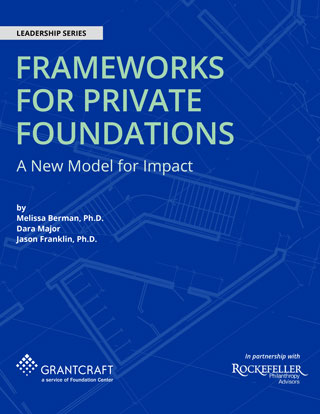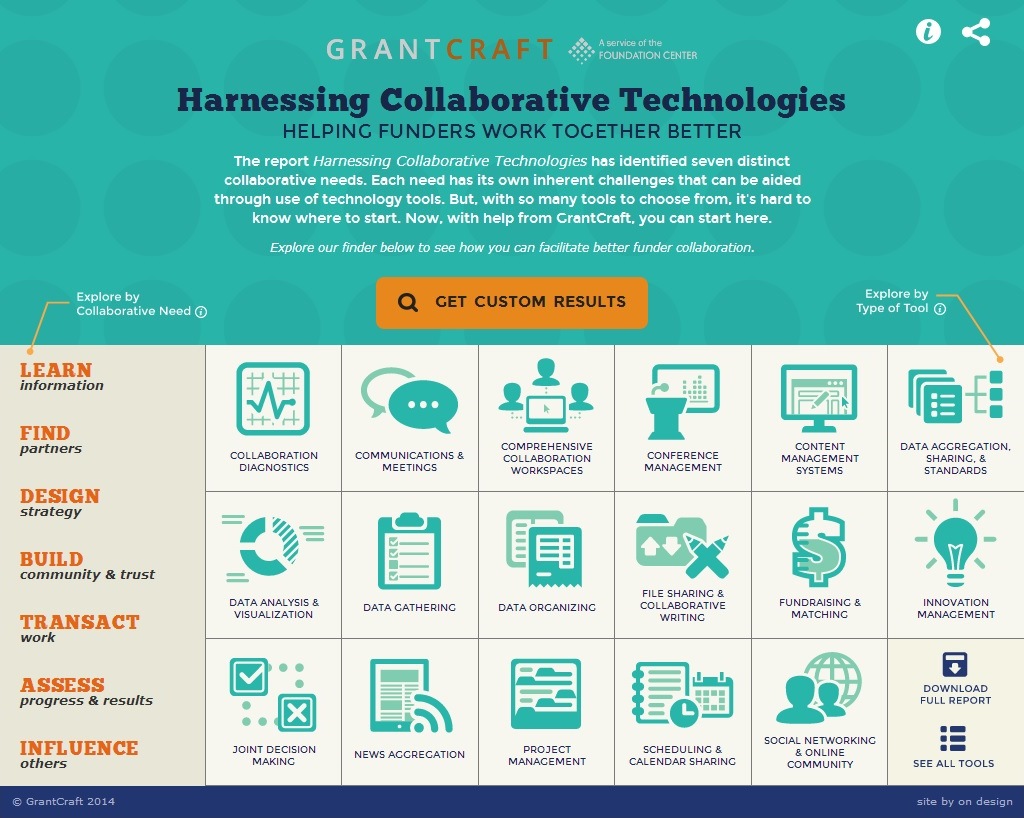What We’ve Learned After Five Years of Risk Management in Philanthropy
The world is unpredictable. Unforeseen events occur that can jeopardize the success of otherwise well-conceived projects and programs. Awareness of this problem inspires the work of Open Road Alliance, which provides one-time funding to meet unforeseen obstacles that threaten the impact of promising social sector initiatives. Though providing this type of assistance is vital, the need for it suggests that both funders and nonprofit organizations would benefit from a more comprehensive understanding of the role of risk in the social sector. After five years of providing contingency funds and researching the issue, we have a clearer sense of what works and how planning for risk can save money, time, and social impact.

During the first year of our grantmaking, we worked to define our funding criteria so that our grants would build a body of evidence supporting the importance of contingency funding in the sector. We decided to select projects that were already fully financed, mid-implementation, and presented a one-time funding emergency that a single grant could solve. These parameters continue to be our definition of contingency funding.
We also added one more condition, one which we included to underscore just how much social impact funders were ignoring. We looked for projects that had the potential for some level of catalytic impact. These projects have the potential to be system-changing by creating an amplifier or multiplier effect. For example, Open Road will fund a project that is running a clinical trial for vaccines, but not one to finish a wing of a hospital. While we think that completion of a hospital is absolutely a worthy funding opportunity, we want to demonstrate the scale of the impact that can be preserved when donors are ready to provide a relatively small amount of contingency funding to system-changing projects. What this translates to, for our team, is managing risk to protect impact, as opposed to managing financial risk, reputational risk, or governance risk.
As we grew our portfolio, we had many examples of good projects that were threatened because the nonprofits could not quickly find small amounts of money to surmount unexpected roadblocks. But we found that the subject of contingency or emergency funding was not addressed in the literature nor did it seem to be practiced in the field at the scale needed to preserve impact across the sector. There was no common understanding of risk in philanthropy, or how to manage it in order to preserve impact.
So, over our five years, Open Road has completed several research projects to inform our advocacy and give us actionable data and tools to present to the sector. The first, in 2014, was an in-depth study of a large international health NGO that relied heavily on grant money. The study looked at risks along the project cycle including staffing, partner communication, logistics, and currency risks. We discovered that a minor hiccup in any of these areas could result in mid-implementation budget shortfalls that the established funding cycles the NGO relied on would not easily address. Clearly, roadblocks don’t wait for funding cycles. The overwhelming majority of the identified challenges stemmed both from the difference between the real costs of the project and what the grant allowed for and restricted grant money that the organization was not able to use flexibly. Most of this NGO’s projects were underfunded, which program officers knew upfront. However, they tended to accept the grant, believing that they would somehow make up the difference between the real costs and the grant budget. Then when an urgent need arose, they had no financial flexibility and were left scrambling to find funds.
One lesson from this study is that many projects, even of well-established nonprofits, are just one misfortune away from significant, organization-altering shortfalls. Of course, it is possible to manage and mitigate problems that arise from under-financing and unexpected roadblocks, but doing so is a responsibility to be shared between grantees and their funders. This collaboration is a topic we’ve written a lot about (and more recently have developed guidance on), but the findings from this 2014 study can be found here.
We wondered why project managers were willing to accept less money than the project cost. The answer appears to be closely tied to ineffective communication between funders and grantees. The project managers did not insist upon true cost funding because they feared competition from others who would accept lesser amounts. There was never a frank discussion about what underfunding would mean for the project or the areas of risk posed by insufficient funds.
Having looked at one organization in depth, we were interested in how pervasive the problem of inadequate risk management is and wanted data on how often contingency funding was needed, how often nonprofits asked for money mid-grant cycle, whether these requests were granted and, if not, how the project outcomes were impacted. In 2015, Open Road commissioned a survey of 200 nonprofits and 200 funders. The main takeaways are that disruptions requiring additional funds are common and expected — funders and grantees both reported that one in five projects required contingency funding. However, it is not common practice for either to address these problems before they occur. Grantees reported that they were hesitant to communicate with funders about potential obstacles, and funders reported that they did not ask at any point about what could go wrong.
The survey also showed that funders and grantees are often misaligned in their perceptions of outcomes. Funders believe that nonprofits could obtain necessary funds to complete projects while nonprofits reported they didn’t find additional funds and as a result projects were abbreviated, delayed, or terminated. Roughly twenty percent of funded projects do not reach anticipated goals because contingency funds are not available, which is obviously a substantial amount of wasted time, money, effort, and impact.
The philanthropic sector's unwillingness to prepare for roadblocks sets it apart from ordinary business transactions in which having a Plan B is normal and expected. In our sector, a large proportion of projects are underfunded from the beginning and can't rely on financial backing from their funders to help them over rough spots. Plus, many of these projects are being implemented in geographic regions with vulnerabilities in infrastructure, civil institutions, and government services.
During the five years since Open Road made its first grant, we have disbursed over $12 million in charitable grants and loans to 108 projects. Our average leverage (the ratio of our money to the size of the original grant) is 7.6, meaning that our $12 million preserved the impact of $92 million worth of funds invested by other donors. Nearly all have achieved or exceeded their original goals, with just one small infusion of funds from us.
We are continuing to research risk in philanthropy and are testing out new funding mechanisms, including establishing a loan fund to provide bridge funding to nonprofits and social enterprises at below-market rates. So far, there has been significant market demand. But the point of all this — why Open Road exists and why we continue to evolve — is to provide commonsense risk management resources to our sector.
We should remember that the ultimate beneficiaries of better planning for disruption are the people and environments that the projects were designed help. When a project fails to deliver results to the funder, it has first failed to deliver results to its target population and that should be a problematic issue for us all.
Laurie Michaels is Founder of Open Road Alliance, which is celebrating its fifth anniversary. This article is the first in a four-part series sharing what Open Road has learned about risk management in philanthropy and how the organization has evolved over the past five years to better address the need for fast, flexible contingency funding in the sector. This series will include findings from Open Road’s research and practical guidance on best practices for managing risk in order to maximize impact in philanthropy.




